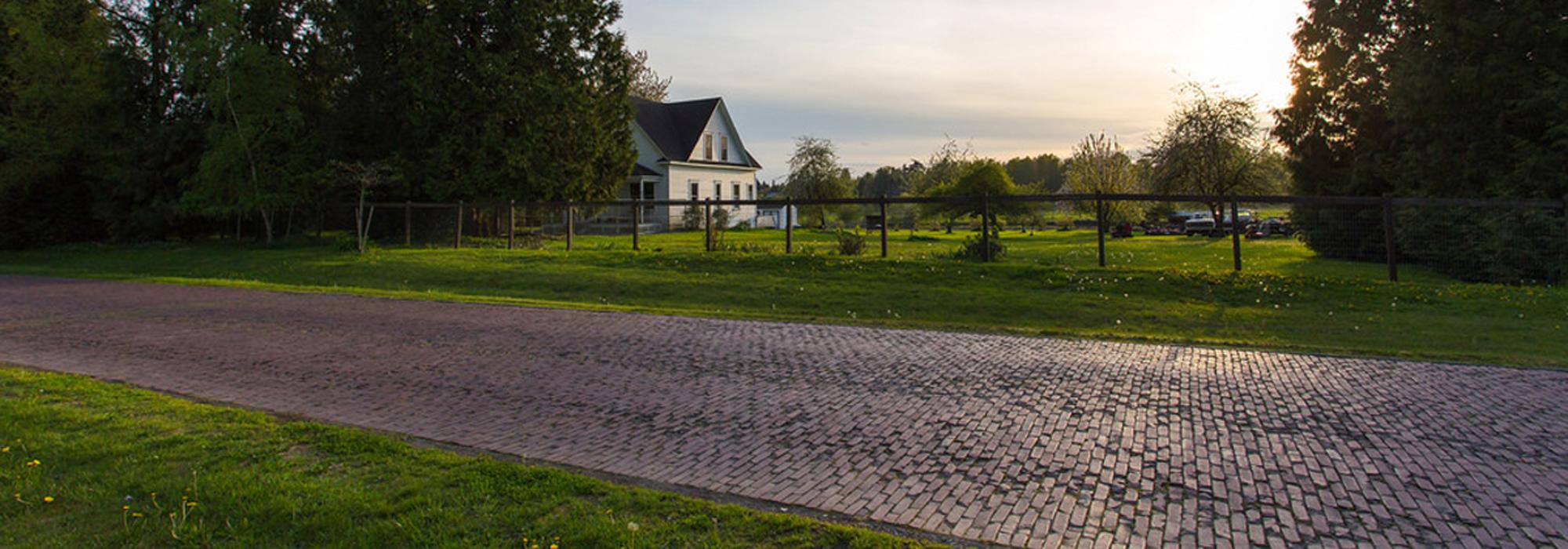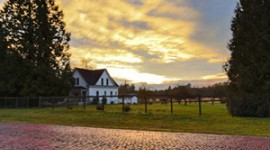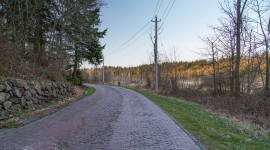Urban Sprawl to Impact Washington State’s Old Red Brick Road
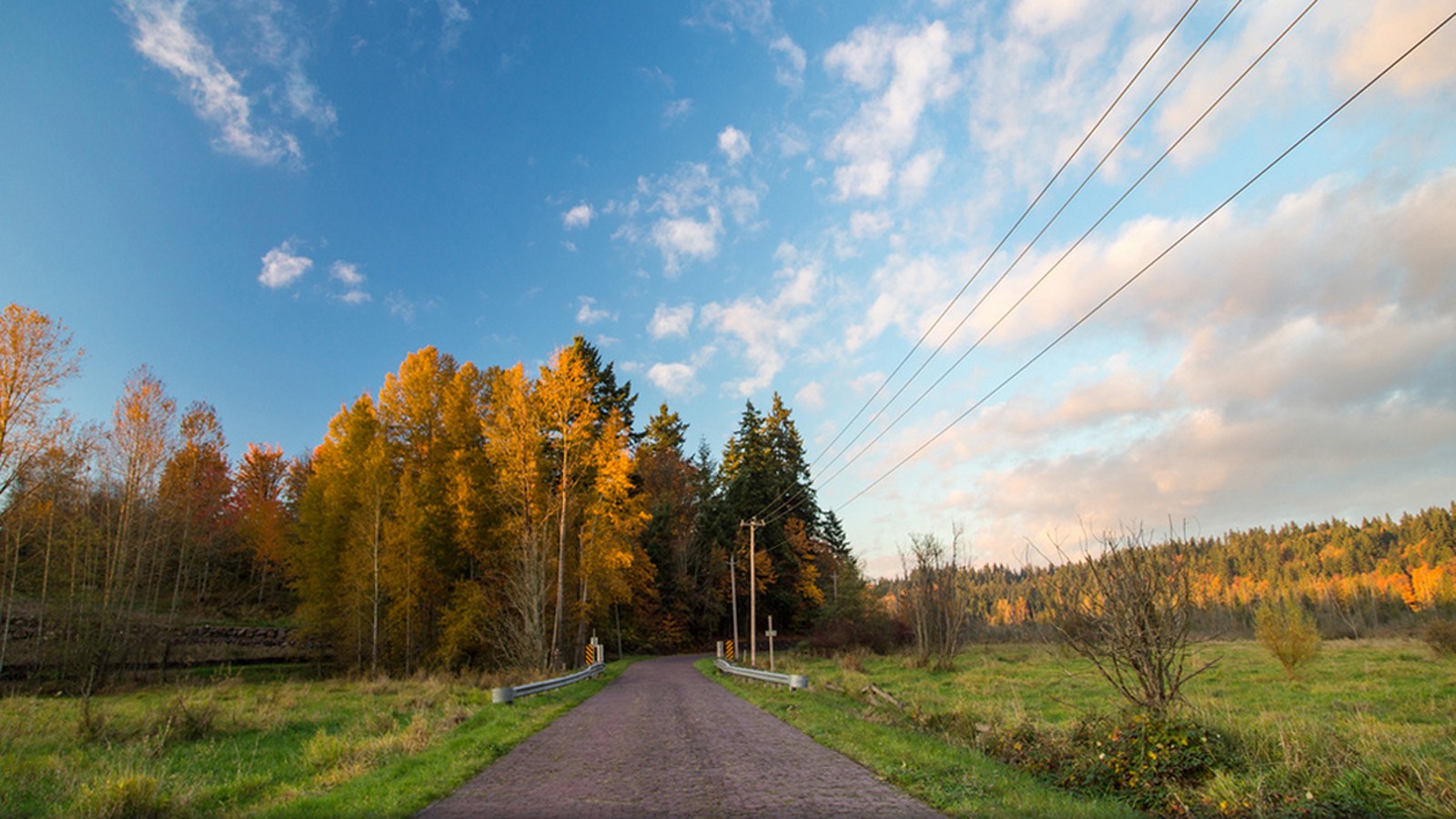
The Old Red Brick Road and Evans Creek Valley form an ecologically and historically significant region that is threatened with small lot luxury home development. The proposed construction would forever alter the rural and historic character of the area along with critical riparian, wetland and upland habitat.
History
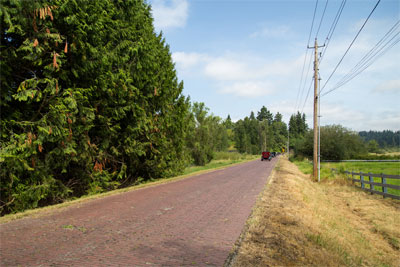
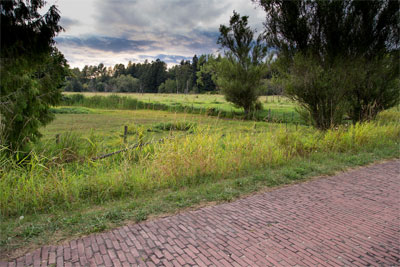
Old Red Brick Road, 2013.The Old Red Brick Road is a section of the Snoqualmie Pass wagon road, which followed a well-established Indian trail linking the Puget Sound region to points eastward. Non-native settlers began arriving in the area in 1851, and immediately worked to establish a wagon route across the Cascade Mountains to promote settlement and development. The first homesteads along the road were established in the 1880s and 1890s and the clearing of old-growth forest enabled many agricultural uses including the raising of horses, cattle, sheep, chickens, and mink. The original dirt and gravel precursor to the Old Red Brick Road was constructed in 1901. In 1913, as auto routes grew, the 2.5-mile long road was repaved in brick, and in 1923 it became part of the Yellowstone Trail, one of the first transcontinental highways constructed in the U.S. Although only 1.1 miles of the road remain, the State of Washington asserts that it “is significant in that not only is the road virtually intact, but so is much of the valley through which it runs. It is the only link of the Yellowstone Trail that remains in this condition in Washington State since its completion in the 1920s.” The road was listed in the National Register of Historic Places in 1974.
In addition to having historical significance, the landscape of the Old Red Brick Road and its surrounding area is an important ecosystem, which includes a large creek and multiple tributaries, 130 acres of wetlands, wooded areas, and open fields. This aquatic system’s headwaters ultimately connect to the Puget Sound and provide spawning ground for three species of salmon, including Endangered Species Act protected Chinook salmon. The area is also home to great blue heron, red-tailed hawk, and other protected bird species, along with coyote, black bear, bobcat, beaver and many other mammals.
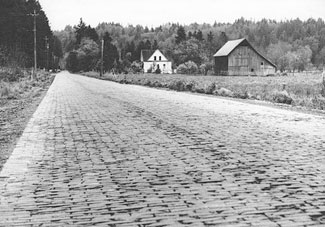

(upper) Historic James Mattson House along the Old Red Brick
Road; (lower) Old Red Brick Road, 2013.Threat
In May 2014, a local land owner and planner with ESM Consulting Engineers proposed the construction of a 30-acre community of luxury homes on his property along the road. The plans for the gated development seek to cluster large residences on small lots. There are fifteen homes on 47 acres in the existing neighborhood, and the project will increase the community to 40 homes on 74 acres, nearly three times the current density. The new, gated complex will use the historic road as its primary entrance and the resulting increase in traffic will accelerate the destruction of the old road. Due to its historic nature, at eighteen-feet wide and without usable shoulders, the Old Red Brick Road is incompatible with the higher volume of traffic that will accompany the development – an estimated increase of 267%. Although the County has committed to repairing the road according to national preservation standards, it can, and has, temporarily patched the road with non-historically appropriate material (such as asphalt) to maintain short term serviceability.
The development will also lead to the destruction of several historic properties, including one of three homes from the original settlement period, a homestead log cabin built in 1900, and three 75-year-old barns. This will significantly alter the rural and historic character of the valley. Finally, the State Historic Preservation Office identifies the area as having a high likelihood for pre-contact archaeological artifacts – a determination supported by nearby finds. A full archaeological survey has been ordered to take place as part of the review process for the proposed development.
Since 2009, under the guise of “farm maintenance,” the developer engaged in clearing and grading within environmentally critical areas and introduced a new impervious surface without the required permits. After numerous resident complaints, the County issued a long-awaited code violation. Nevertheless, if the full-scale development is approved, soil disruption, tree loss and new construction will further damage habitat.
How to Help
Assuming the developer’s environmental code violations are resolved, the County could then entertain issuing permits for the development to move forward. Interested parties are encouraged to write to Dow Constantine, the King County Executive to request that the developer be held accountable for the code violations and work in harmony with the rural and historic character of the area, and to express their concerns or opposition to the project: Email at kcexec@kingcounty.gov or mail at:
The Honorable County Executive Dow Constantine
Chinook Building, 401 Fifth Avenue, Suite 800
Seattle, WA 98104



